

West Phillipinas Offshore
Manila Oceanic Trench
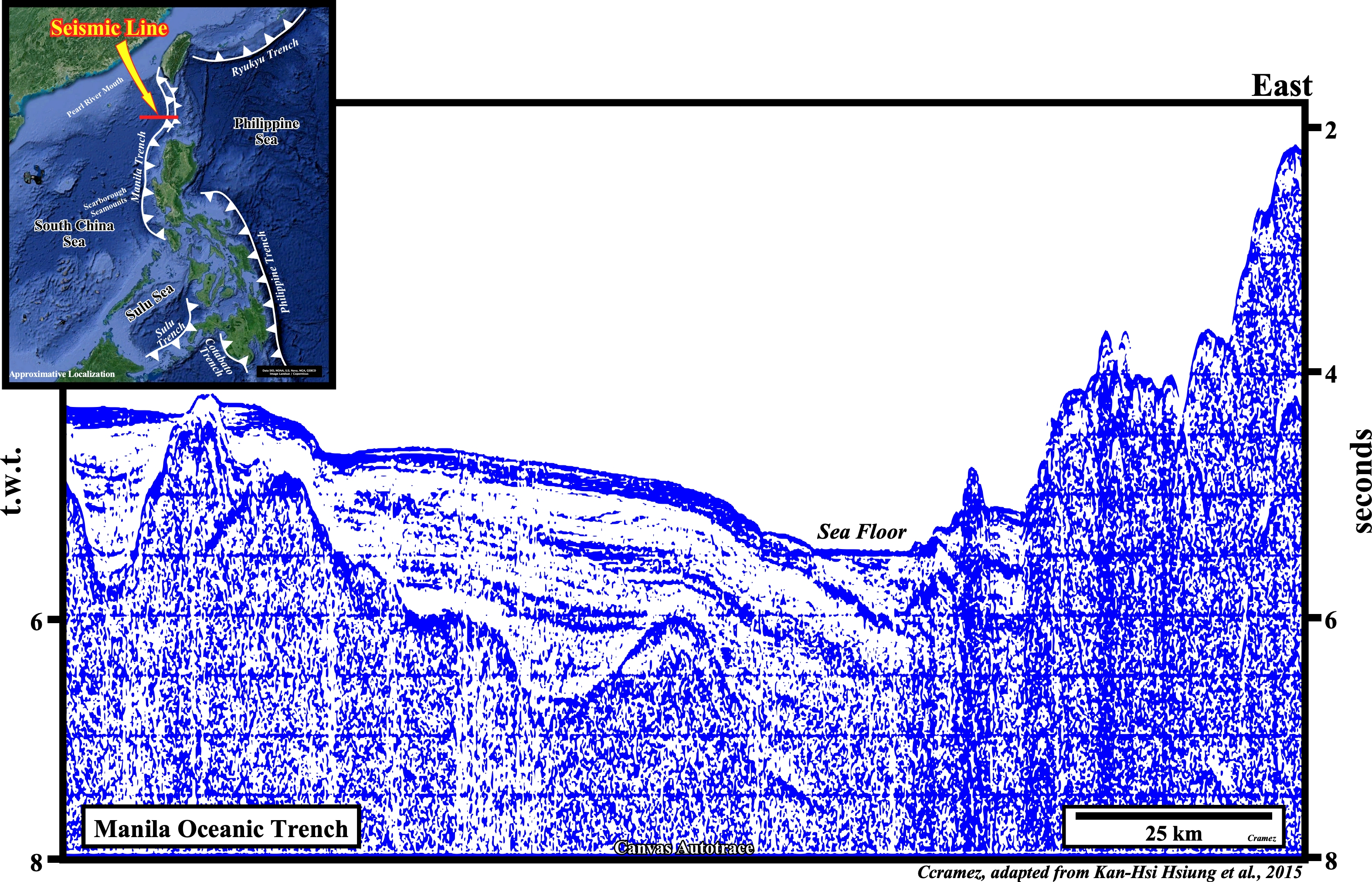
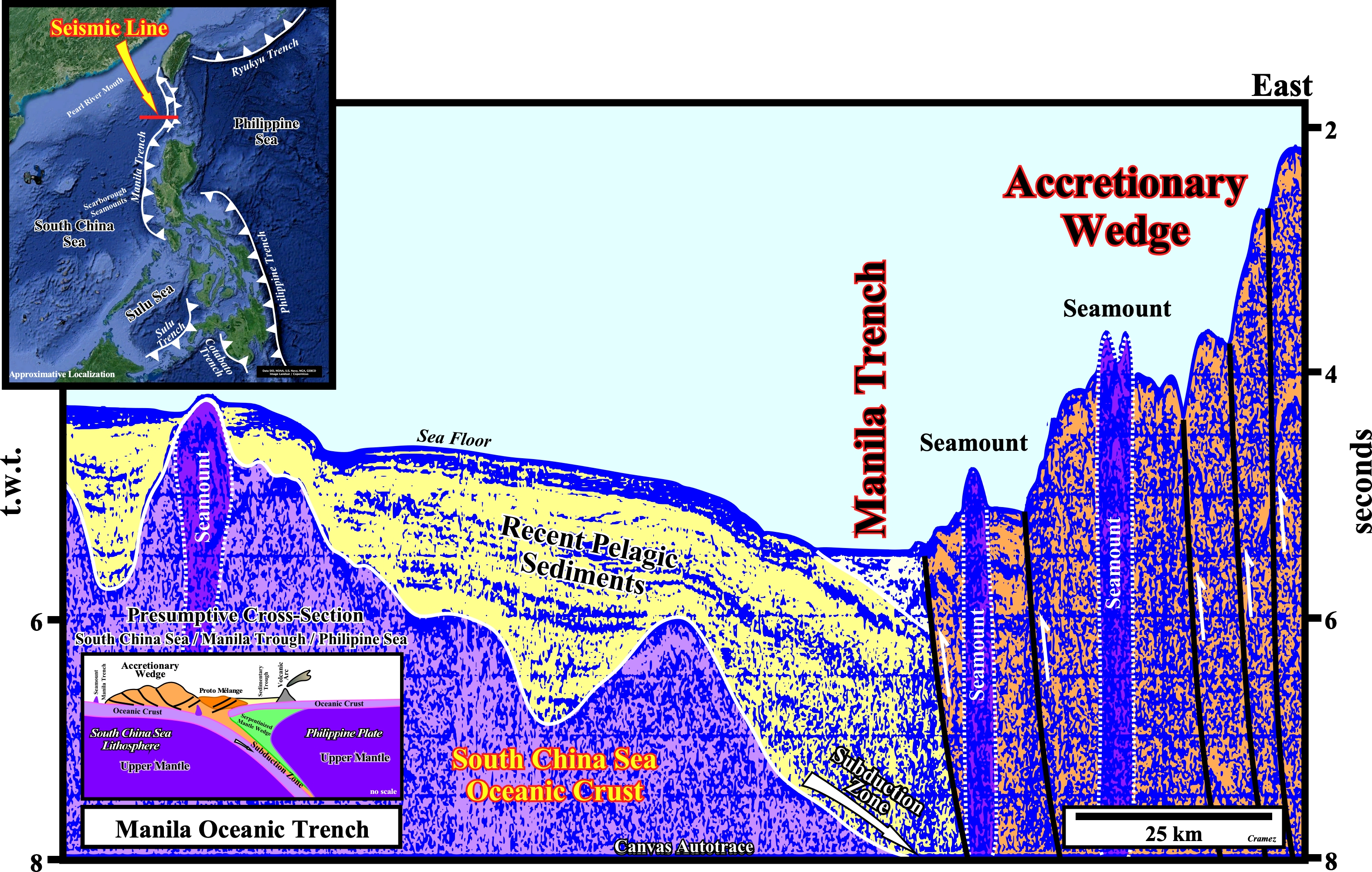
Geologically, this tentative interpretation of a Canvas autotrace of a seismic line recognizing the Manila oceanic trench marks the limit between the plunging South China Sea lithosphere, composed by oceanic crust covered by recent pelagic sediments, and the accretionary prism of the Philippine lithospheric plate (see location map on the upper right corner of the plate). In other words, the Manila oceanic trench, illustrated on this tentative interpretation, is associated with a B-type subduction, in which the descending lithospheric plate is the South China Sea lithosphere and the overriding plate is the Philippine plate, represented here by the accretionary wedge. The onset of the Manila trench's subduction, as well as, the emplacement of the East Taiwan ophiolites, during the arc-continent collision, are supposed to have started 17-15 Ma, when the expansion of South China Sea (seafloor spreading) seems to have ended (Chiou-Ting Lin et al., 2019). During the subduction the material of the South China Sea lithosphere, i.e., oceanic crust, seamount (volcanic land-form rising from the ocean floor from but that does not reach the sea level) and pelagic sediments mixed each other along the subduction zone. Notice the seamount are recognized not only in the oceanic crust, but in the accretionary wedge as well (see next plate).
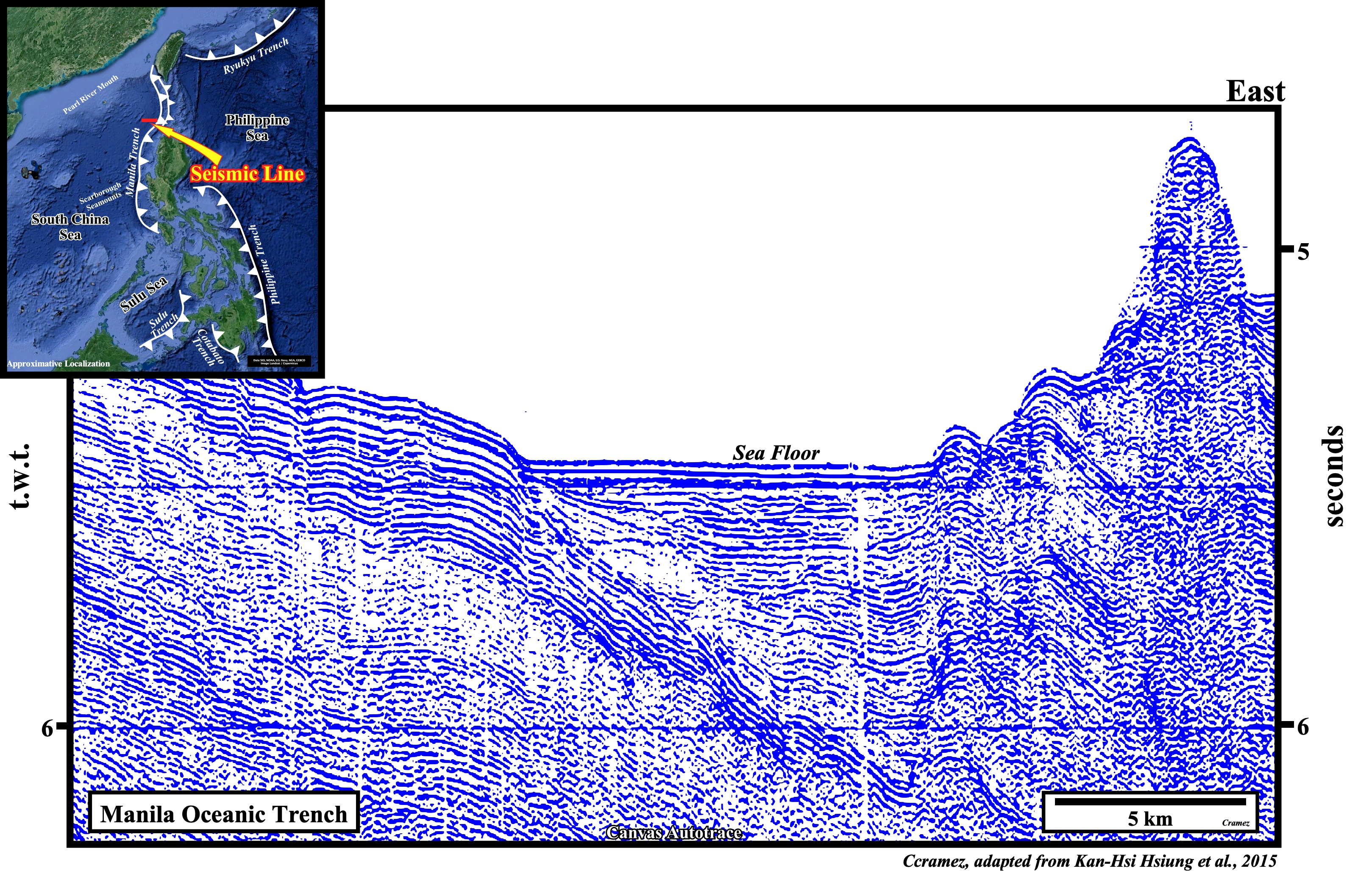
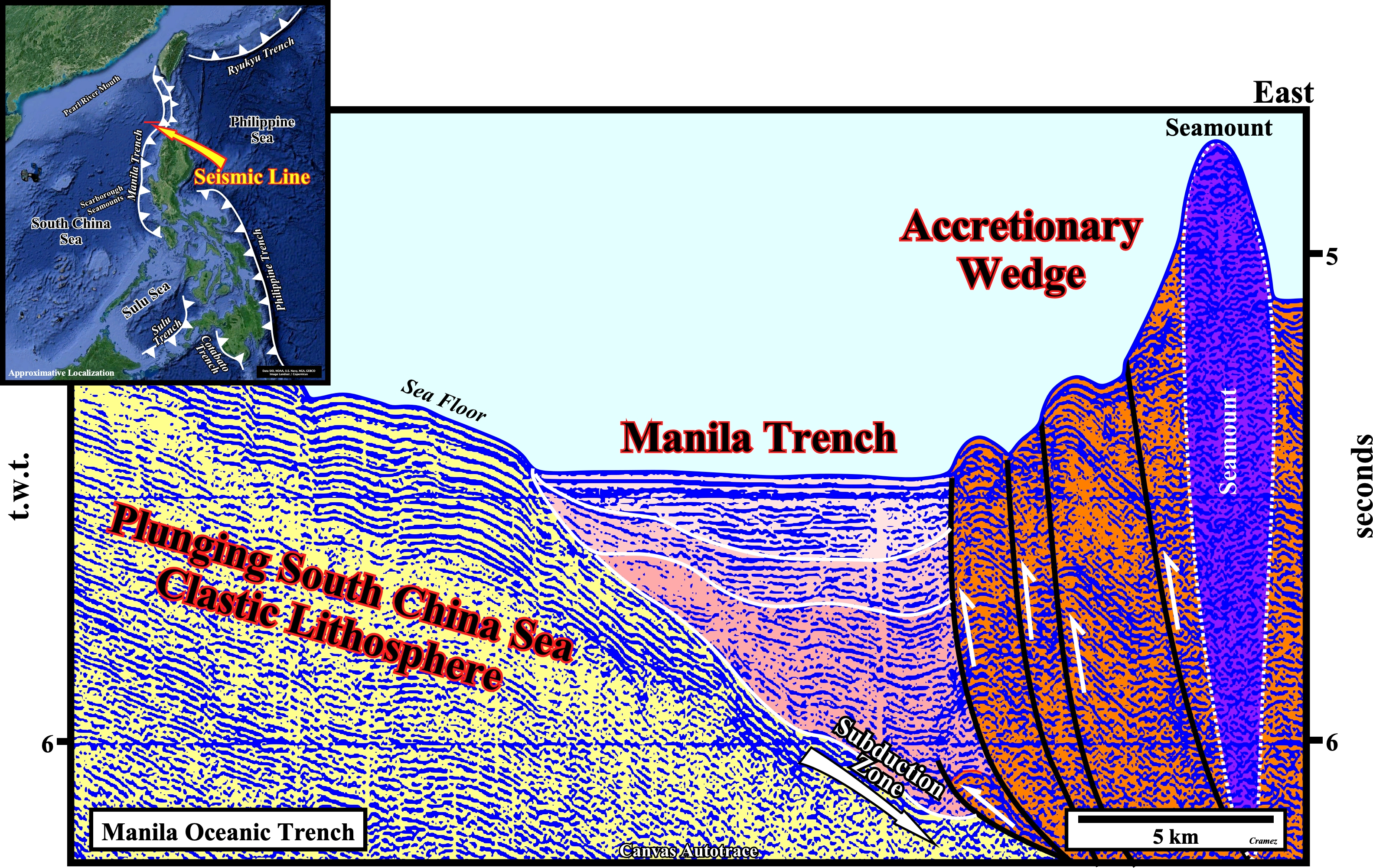
On this tentative interpretation three main geological features are recognized : (i) Seamounts ; (ii) The infilled Manila trench and (iii) The plunging of the South China Sea clastic lithosphere. A seamounts is, clearly, visible in the accretionary wedge of the Philippine lithospheric plate, which is, mainly, formed by oceanic crust and upper Earth's mantle. Technically, a volcanic seamount, is defined as an isolated rise in elevation, often more than 1000 meters, from the surrounding seafloor with a limited summit area and a more or less conical geometry. Generally, seamounts are either volcanoes located near the plate boundaries and mid-oceanic ridges built by decompression melting of rocks in the upper mantle or volcanoes formed near or above a subduction zone, since the plunging lithospheric plate adds volatiles to the overriding plate that lowers its melting point (https://en.wikipedia.org/ wiki/Seamount). The Manila oceanic trench seems, here, filled in onlapping by, more or less, undeformed pelagic sediments contrasting with the pelagic sediments of the plunging South China Sea clastic lithosphere which are deformed by an extensional tectonic regime (σ1 vertical) developed near the hinge zone of the descending plate (see next plate).
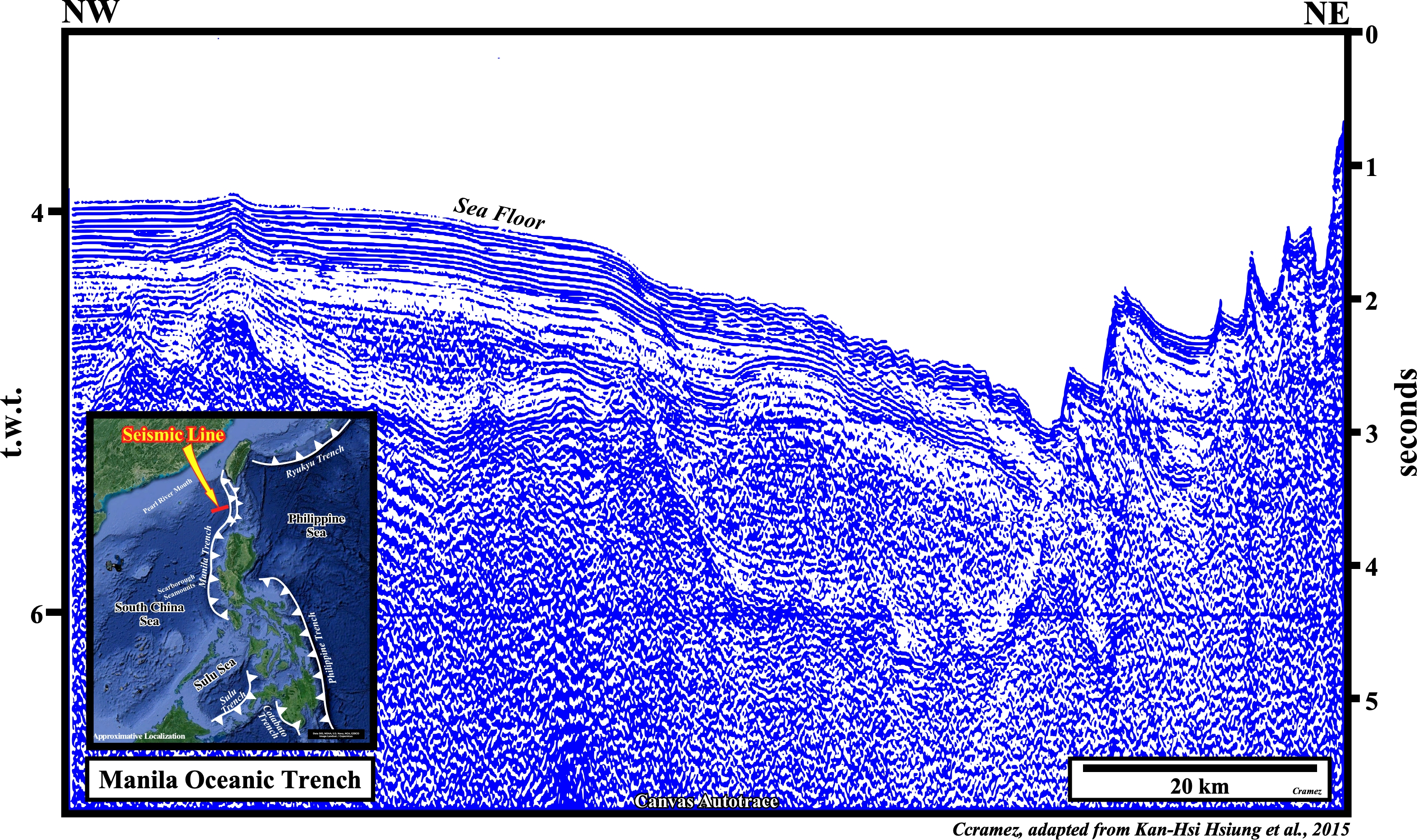
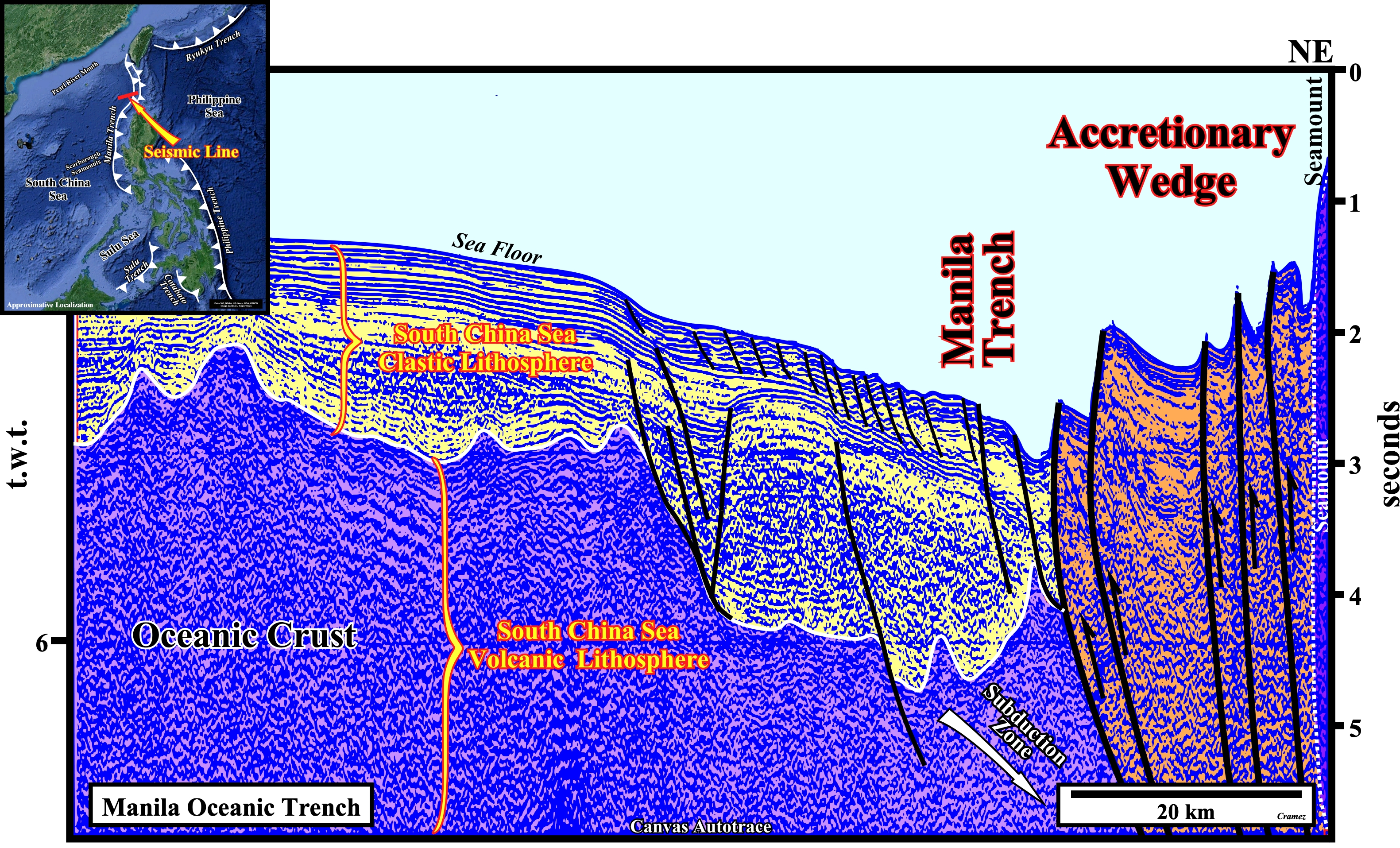
The South China Sea pelagic sediments of the plunging lithospheric plate are, here clear affected by a lengthening, particularly the upper ones, that several geoscientists associated with an gravitational instability of the descending slab that sink faster than the rate of plate convergence, producing a migration of the hinge zone and the bulge, where the slab bends, away from the arc, i.e., producing a slab rollback (https://www.files.ethz.ch/structuralgeology/jpb/files/English/1Introtecto.pdf), which describes the oceanward retreat of the trench due to the gravitational pull of the slab, what creates extensional episodes in an overall convergent regime and trigger changes in plate boundary patterns. Rollback is particularly evident in certain subduction zones as Mariana (see Page 37) and Barbados.
Send E-mails to carlos.cramez@bluewin.ch with comments and suggestions to improve this atlas.
Copyright © 2001 CCramez
Last update:
2022